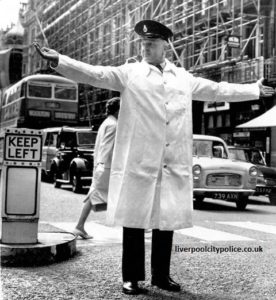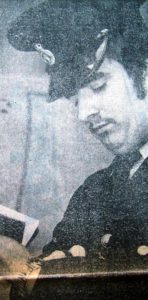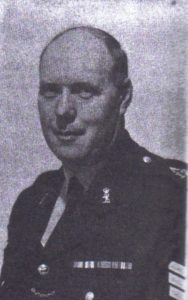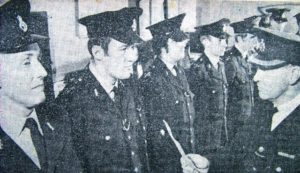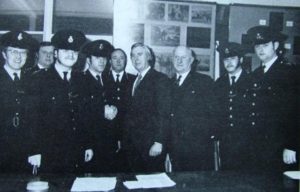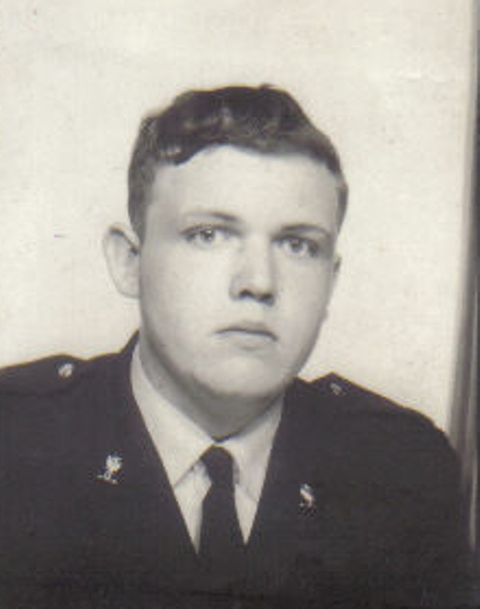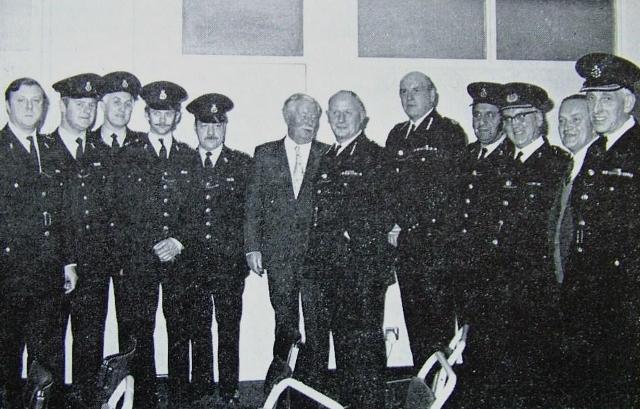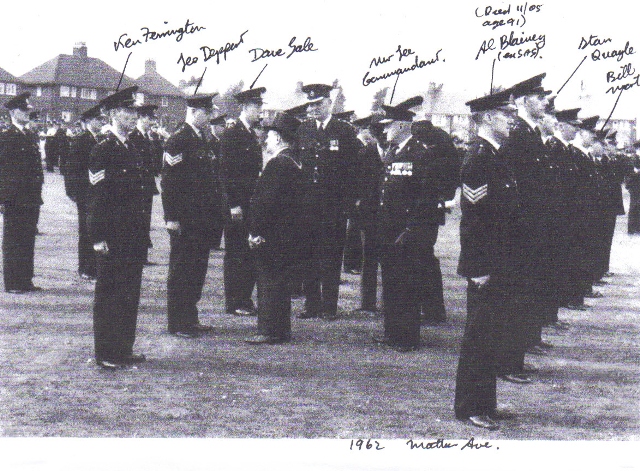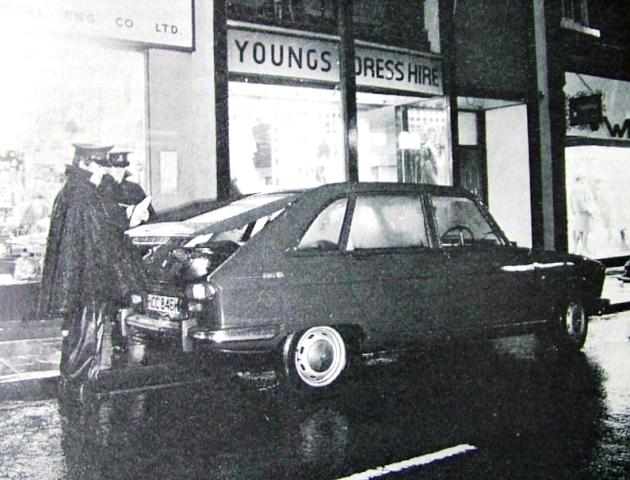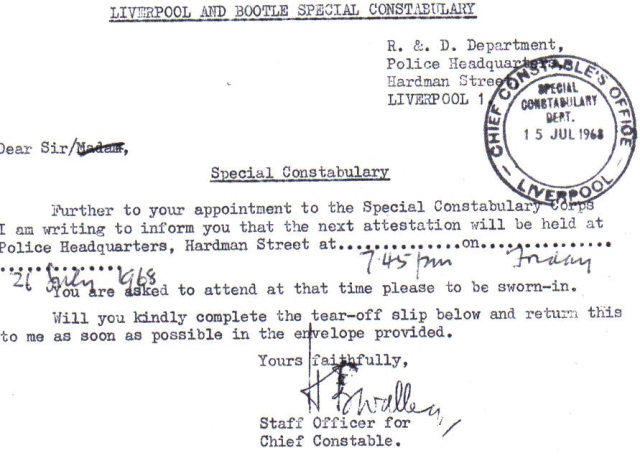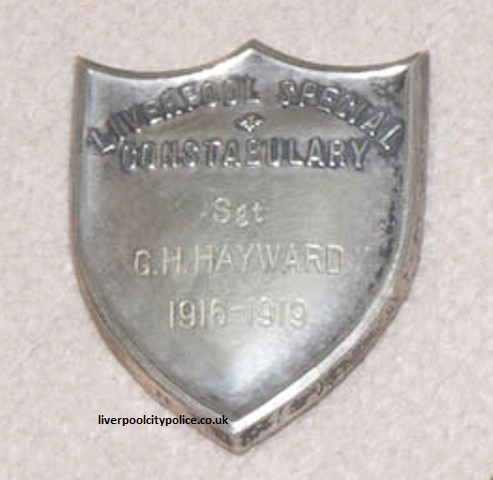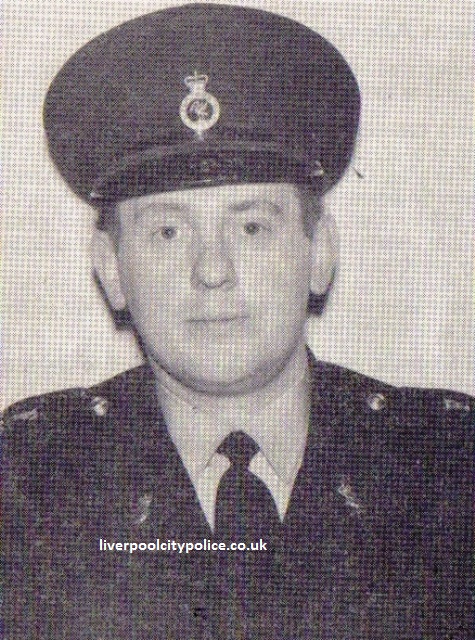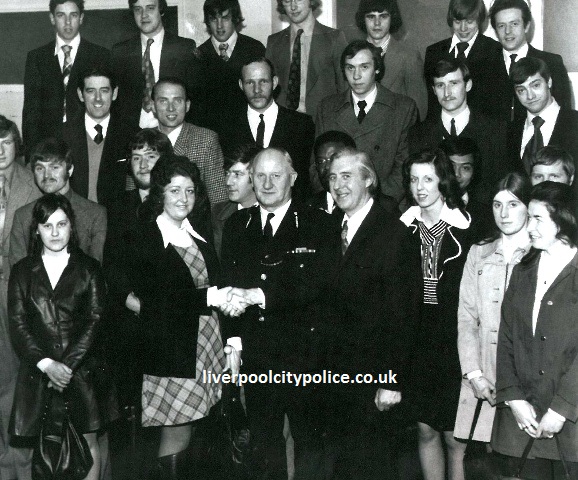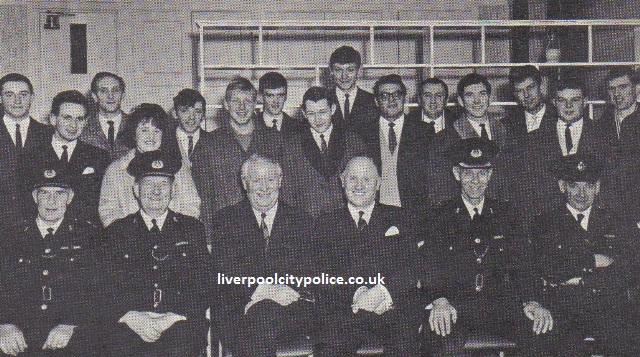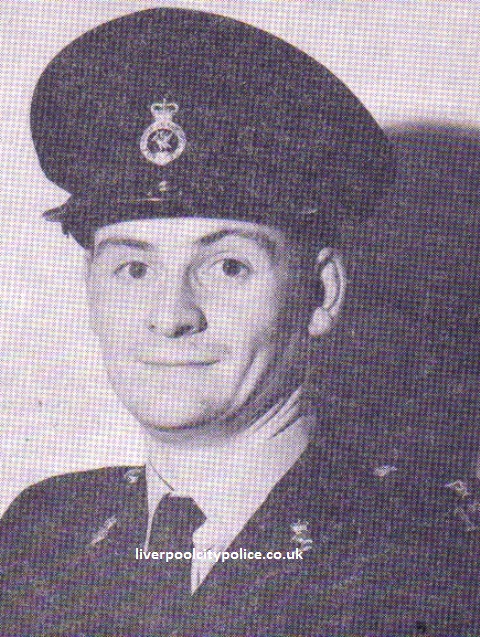SPECIAL CONSTABULARY by peter dellius, retired
with contributions and photographs by alastair caird, special chief inspector ‘A’ division, retired
The Special Constabulary existed for many hundreds of years and had an informal basis beginning with Parish Constables and the like. Through the centuries the civil power would call upon citizens to act as Constables on a Ad Hoc basis, “Specials” were ever present at all major events throughout British history. It was not until the outbreak of the First World War that the Government recognized a need for an organized body of Constables and the Special Constabulary that we know today was born, principally to guard Utility sites against sabotage by German agents.
Upon the cessation of hostilities, many Constabularies issued a token of appreciation to the members of the Special Constabulary, this usually took the form of a bronze medal or suchlike, Liverpool was no exception but went one step further and each man received a wooden plaque surmounted by a Liverbird and with a white metal shield below with the words “Liverpool Special Constabulary” followed by the Rank, name and service dates of the officer. As the dates vary for each officer’s service these plaques are very much an individual award. In 1919 the Special Constabulary medal for faithful service was instituted and remains in service to the present day, it is issued for 9 years service and each subsequent 10 years gains a bar. Until quite recently the bars to the medal bore the inscription Long Service followed by the year issued, because of expense this has changed to just “Long Service” During war time service counts treble so for three years wartime service the medal would be earned
After the First World War the Special Constabulary in Liverpool was put on a more professional footing and brought in line with the regular force. Unlike the majority of Police forces the Liverpool Specials had a similar rank structure to the regular force and were posted to Divisions, this state of affairs remained until the advent of the Merseyside Police when the Special Constabulary was restructured and Police ranks disappeared to give way to ranks such as Section Officer, Divisional Officer Etc. This has now been reversed and the rank structure mirrors that of the Regular Force once again with the addition of Helmets for the male officers.
During the late 1940’s women were permitted to join the Special Constabulary and like the Regular Force women Special Constables were quite separate from the males. Prior to integration in the 1970’s The Special Police Women’s Department paraded at the Pier Head, A Stalwart WP Special Sergeant of the time was Ethel Sinclair who served the city of Liverpool for many years. One of her Sons and a Daughter joined the Regular Force and served through to retirement.
The Specials in “A” Division were stationed at Hatton Garden Police station, now the Juvenile Court complex, and later at St Anne Street Police Station. The officers of this Division paraded on Friday and Saturday nights to assist with the influx into the City Centre of Revelers out for a good time. Other Division’s Paraded on nights most suited to the needs of that particular Division.
Over the years Specials have shown Courage, Devotion and Determination in the execution their duty and have brought honour on the Force. There has also been a steady flow of specials to the Regular force and many have risen to high rank.
The Staff officer to the Special Constabulary was Retired Chief Superintendent H.B.Walley, who held the rank of Honourary Superintendent. He had joined the Liverpool City Police in the 1920’s. Throughout the 60’s and 70’s it was Bert Walley who was at the Helm steering the Specials, always ready to give help and guidance.
1955
Chief Constable Smith conferred an illuminated Merit award on Special Constable Kenneth Ferrington “A” Division.
The officer had made an arrest and was escorting his Prisoner on foot to the Main Bridewell, when passing the Wine Lodge in Manchester Street a crowd began to jostle the officer who continued on regardless, word spread and a hostile gang emerged from the wine lodge intent on releasing the prisoner. S/Constable Ferrington drew his truncheon and attempted to protect himself. The crowd severely beat the young officer who steadfastly refused to give up his prisoner.
20th of July, 1965
Special Sergeant George White
At ten minutes past six on the evening of the 20th of July, 1965, a Caledonian Airliner took off from Speke Airport and almost immediately crashed into the Mothack Chemical Plant near Woodend Avenue and Speke Boulevard. The Pilot and Co-Pilot were killed as were two female factory workers. Others were feared killed or trapped in the debris, this proved not to be the case, as other workers had left just before the tragedy. The Police and Fire service were quickly on the scene and commenced rescue operations. It was soon realised that the accident had caused fatalities and several officers were overcome by the situation but continued with their duties. The call went out for assistance and Special Sergeant George White attended, George was an undertaker by calling and offered his expert knowledge to the senior officers of the Police and Fire Service. Special Sergeant White then worked throughout the night recovering and dealing with the poor victims. For his Service at the disaster George was commended by the Chief Constable.
1970’s
The below named Officers were commended by Mr. Haughton, Chief Constable, Liverpool and Bootle Constabulary:
Special Constable 105 “A” Bryan Rogers
Special Constable 122 “A” John Smith (Deceased.)
During a Large Scale disturbance both officers were attacked whist arresting an offender, S/Constable Smith received severe injuries when a bottle was smashed on his head. Despite this the officers held onto the Prisoner until assistance arrived. Both officers were removed to Hospital.
Friday the 13th of March 1977
Special Constable’s 471 “A” Brian Croft and 555”A” Mike Graham were on patrol in Roe Street when they saw a male being savagely assaulted by a gang, the officers went to assist, S/Constable Croft arrested a male but was attacked by him and fell to the ground where he was set upon by the gang and in a frenzied attack was beaten to within an inch of his life. S/Constable Graham was able to call for assistance despite a broken wrist/hand. The first Regular officer on the scene, a Sergeant, realized the extent of the injuries to S/Constable Croft and took him by Police vehicle to the Royal Hospital where his heart stopped twice but he was eventually resuscitated. He suffered Kidney Damage and a broken leg.
The Special Constabulary in General and Merseyside in particular have amassed many awards for Gallantry, Distinguished and Meritorious Conduct over the years including Several George Medals. In 1977 the MBE was conferred upon the Commandant, P.J.Meakin.
Numerous Commendations have been awarded to the Special Constabulary in Merseyside and at least one Merit Badge has been bestowed upon a Special Constable.
In 1977, before such medals were given to all serving officers, the following members of the Special Constabulary were honoured with the award of the Queens Silver Jubilee Medal
Commandant P.J.Meakin
S/Insp G.H.Bellis “F”
S/Chief Insp. L.W.Depport “A”
S/Chief Insp Farrell “E”
S/Insp K. Ferrington “A”
S/Sgt 224 “F” W.H.Humphrey’s
S/Chief Insp J.H.Lloyd “B”
S/Con 424 “L” D. Morrison
S/Sgt 430”L” E. Unsworth
S/Chief Insp F.L.Wilson “G”
Special Sergeant Pauline Sharpe represented the Merseyside Special Constabulary at a Jubilee Parade on the 6th May 1977 which was inspected by Her Majesty the Queen.
” I am the Officer in the above photograph (shaking hands). In the summer of 1974 I attended a wedding in Whiston with my friend Jim McCosh, Special Constable 106A, who later became a regular (4374) and served until retirement.
At the time I was Special Constable 113 A, although obviously at the time I was off duty.
Jim and I where returning from the Wedding to Liverpool and as we passed Halsnead Junior School in Whiston I heard the sound of breaking Glass coming from the school, I managed to climb over the 8ft high railings, and Jimmy ran further down the road to the gates. As I approached the school I saw a youth who was in the process of smashing all the ground floor windows. I arrested him and during the struggle that ensued he managed to get me to the ground and kicked me in the head a number of times to try and release my hold on him. I hung onto his other leg until Jimmy and eventually some local officers arrived.
He was taken to Prescot Police Station where he was charged with causing a substantial amount of Criminal Damage to the Property.
Whilst writing my statement I collapsed and was taken to Whiston Hospital where. I remained for 10 days with a skull fracture.
The youth subsequently pleaded guilty and was sent to prison and I was commended for ‘Resolute Action in the arrest of a youth for Criminal Damage’ and awarded the sum of £5 (which was worth having in 1975).”
Bob Edwards


